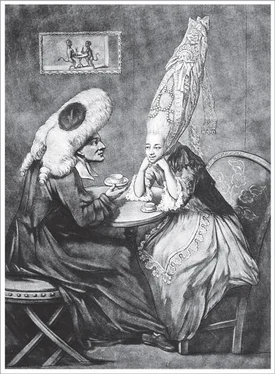Bill Bryson - At Home
Здесь есть возможность читать онлайн «Bill Bryson - At Home» весь текст электронной книги совершенно бесплатно (целиком полную версию без сокращений). В некоторых случаях можно слушать аудио, скачать через торрент в формате fb2 и присутствует краткое содержание. Жанр: Старинная литература, на английском языке. Описание произведения, (предисловие) а так же отзывы посетителей доступны на портале библиотеки ЛибКат.
- Название:At Home
- Автор:
- Жанр:
- Год:неизвестен
- ISBN:нет данных
- Рейтинг книги:4 / 5. Голосов: 1
-
Избранное:Добавить в избранное
- Отзывы:
-
Ваша оценка:
- 80
- 1
- 2
- 3
- 4
- 5
At Home: краткое содержание, описание и аннотация
Предлагаем к чтению аннотацию, описание, краткое содержание или предисловие (зависит от того, что написал сам автор книги «At Home»). Если вы не нашли необходимую информацию о книге — напишите в комментариях, мы постараемся отыскать её.
At Home — читать онлайн бесплатно полную книгу (весь текст) целиком
Ниже представлен текст книги, разбитый по страницам. Система сохранения места последней прочитанной страницы, позволяет с удобством читать онлайн бесплатно книгу «At Home», без необходимости каждый раз заново искать на чём Вы остановились. Поставьте закладку, и сможете в любой момент перейти на страницу, на которой закончили чтение.
Интервал:
Закладка:
Because most dyes were impermanent and finicky, it was necessary to add precise doses of chemical compounds to the water of every load either to preserve the color or to restore it: alum and vinegar for greens, baking soda for purples, oil of vitriol for reds. Every accomplished laundress had a catalog of recipes for removing different kinds of stains. Linen was often steeped in stale urine, or a dilute solution of poultry dung, as this had a bleaching effect, but the resulting smell required additional vigorous rinsing, usually in some kind of herbal extract.
Starching was such a big job that it was often left to a following day. Ironing was another massive and dauntingly separate task. Irons cooled quickly, so a hot iron had to be used with speed and then exchanged with a freshly heated one. Generally, there would be one on the go and two being heated. The irons, heavy in themselves, had to be pressed down with great force to get the desired results. But because there were no controls, they had to be wielded with delicacy and care so as not to scorch fabrics. Heating irons over a fire often made them sooty, too, so they had to be constantly wiped down. If starch was involved, it stuck to the bottom of the iron, which then had to be rubbed with sandpaper or an emery board.
On laundry day it was often necessary for somebody to get up as early as three in the morning to get the hot water going. In many houses with only one servant it was necessary to hire in an outside laundress for the day. Some houses sent their laundry out, but until the invention of carbolic acid and other potent disinfectants, this was always attended with the fear that the laundry would come back infected with some dread disease like scarlet fever. There was also the squeamish uncertainty of not knowing whose clothes were being washed with one’s own. Whiteley’s, a large London department store, offered a laundry service beginning in 1892, but the service didn’t do well until a store manager thought to post a large notice that servants’ clothing and customers’ clothing were always washed separately. Until well into the twentieth century, many of the wealthiest London residents chose to send their weekly laundry to their country estates by train and have it done by people they felt they could trust.
In America the servant situation was very different in almost every way. Americans, it is often written, didn’t have nearly as many servants as Europeans. That is true only up to a point, however, for Americans had slaves. Thomas Jefferson owned more than two hundred slaves, including twenty-five for his household alone. As one of his biographers has noted, “When Jefferson wrote that he planted olive trees and pomegranates, one must be reminded that he wielded no shovel, but simply directed his slaves.”
Slavery and race were not automatic in the early days. Some blacks were treated as indentured servants, and freed like anyone else when their time was up. A seventeenth-century black man in Virginia named Anthony Johnson acquired a 250-acre tobacco plantation and grew prosperous enough to be a slave owner himself. Nor was slavery a southern institution at first. Slavery was legal in New York until 1827. In Pennsylvania, William Penn owned slaves. When Benjamin Franklin moved to London in 1757, he brought with him two slaves, named King and Peter.
What America didn’t have a lot of were free servants. Even at the peak of service in America, fewer than half of U.S. households employed a servant, and many servants didn’t see themselves as servants at all. Most refused to wear livery, and many expected to sit down to meals with the family—to be treated, in short, as something much closer to equals.
As one historian has put it, rather than try to reform the servants, it was easier to reform the house, and so from an early period America became besotted with convenience and labor-saving devices, though nineteenth-century appliances often added nearly as much labor as they saved. In 1899, the Boston School of Housekeeping calculated that a coal stove required fifty-four minutes of heavy maintenance a day—emptying ash, replenishing coal, blacking and polishing the stove, and so on—before the harried homemaker so much as boiled a pot of water. The rise of gas actually made matters worse. A book called The Cost of Cleanness calculated that a typical eight-room house with gas fittings required fourteen hundred hours a year of special heavy cleaning, including ten hours a month of washing windows.
In any case, many of the new conveniences mostly eliminated work previously done by men—chopping wood, for instance—and so were of little benefit to women. In fact, lifestyle changes and technological improvements mostly just brought more work to women through bigger houses, more complicated meals, more copious and frequent laundry, and ever higher expectations of cleanliness.
But a potent and invisible presence was about to change all that for everyone, and for the story of that we need to proceed not to another room, but to a small box that hangs on the wall.
* The scullery (from escullier , an Old French word for dishes) was where dishes were washed and stacked, and it was here that you found a big, deep sink. Larder —referring to a place where meat was kept—isn’t, as one might suppose, directly related to lard; it is from the French lardon , for bacon. The terms are the ones used on the original plans for the Old Rectory, but the servants themselves might well have called the second room a pantry, from the Latin panna , or “bread room,” which by the mid-nineteenth century had come to signify a place of general food storage.
* Incidentally, our standard image of servants in black uniforms with frilly caps, starched aprons, and the like actually reflects a fairly short-lived reality. Servants’ uniforms didn’t become routine until the rise of cotton imports in the 1850s. Before then, the quality of clothes worn by the upper classes was so instantly and visibly superior to that of the working classes that it wasn’t necessary to distinguish servants with uniforms.
• CHAPTER VI •
THE FUSE BOX
In the autumn of 1939, during the slightly hysterical confusion that comes with the outbreak of war, Great Britain introduced stringent blackout regulations to thwart any murderous ambitions by the Luftwaffe. For three months it was essentially illegal to show any light at night, however faint. Rule breakers could be arrested for lighting a cigarette in a doorway or holding a match up to read a road sign. One man was fined for not covering the glow of the heater light from his tropical fish tank. Hotels and offices spent hours every day putting up and taking down special blackout covers. Drivers had to drive around in almost perfect invisibility—even dashboard lights were not allowed—so they had to guess not only where the road was but at what speed they were moving.
Not since the Middle Ages had Britain been so dark, and the consequences were noisy and profound. To avoid striking the curb or anything parked along it, cars took to straddling the middle white lines, which was fine until they encountered another vehicle doing likewise from the opposite direction. Pedestrians found themselves in constant peril as every sidewalk became an obstacle course of unseen lampposts, trees, and street furniture. Trams, known with respect as “the silent peril,” were especially unnerving. “During the first four months of the war,” Juliet Gardiner relates in Wartime , “a total of 4,133 people were killed on Britain’s roads”—a 100 percent increase over the year before. Nearly three-quarters of the victims were pedestrians. Without dropping a single bomb, the Luftwaffe was already killing six hundred people a month, as the British Medical Journal drily observed.
Читать дальшеИнтервал:
Закладка:
Похожие книги на «At Home»
Представляем Вашему вниманию похожие книги на «At Home» списком для выбора. Мы отобрали схожую по названию и смыслу литературу в надежде предоставить читателям больше вариантов отыскать новые, интересные, ещё непрочитанные произведения.
Обсуждение, отзывы о книге «At Home» и просто собственные мнения читателей. Оставьте ваши комментарии, напишите, что Вы думаете о произведении, его смысле или главных героях. Укажите что конкретно понравилось, а что нет, и почему Вы так считаете.












